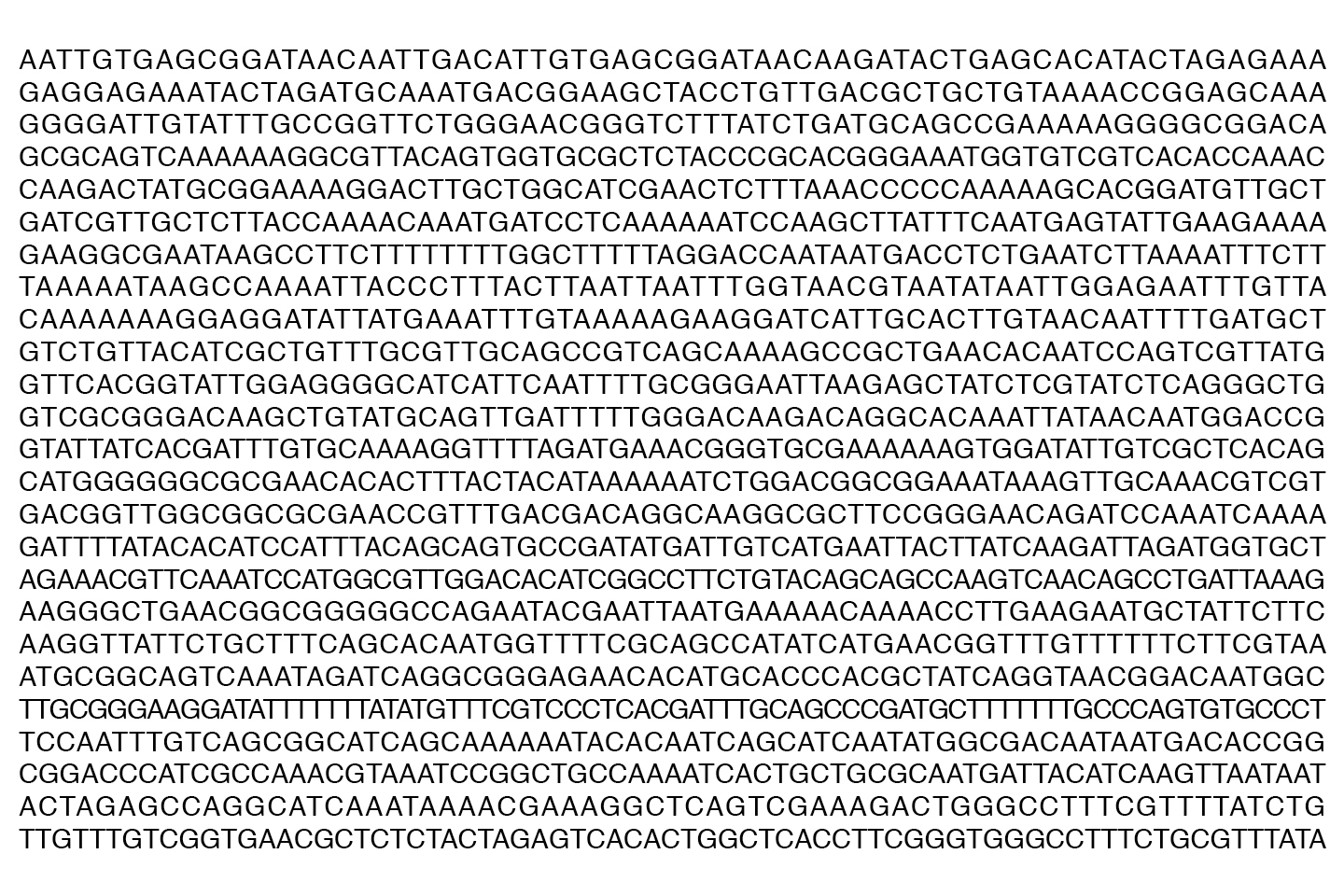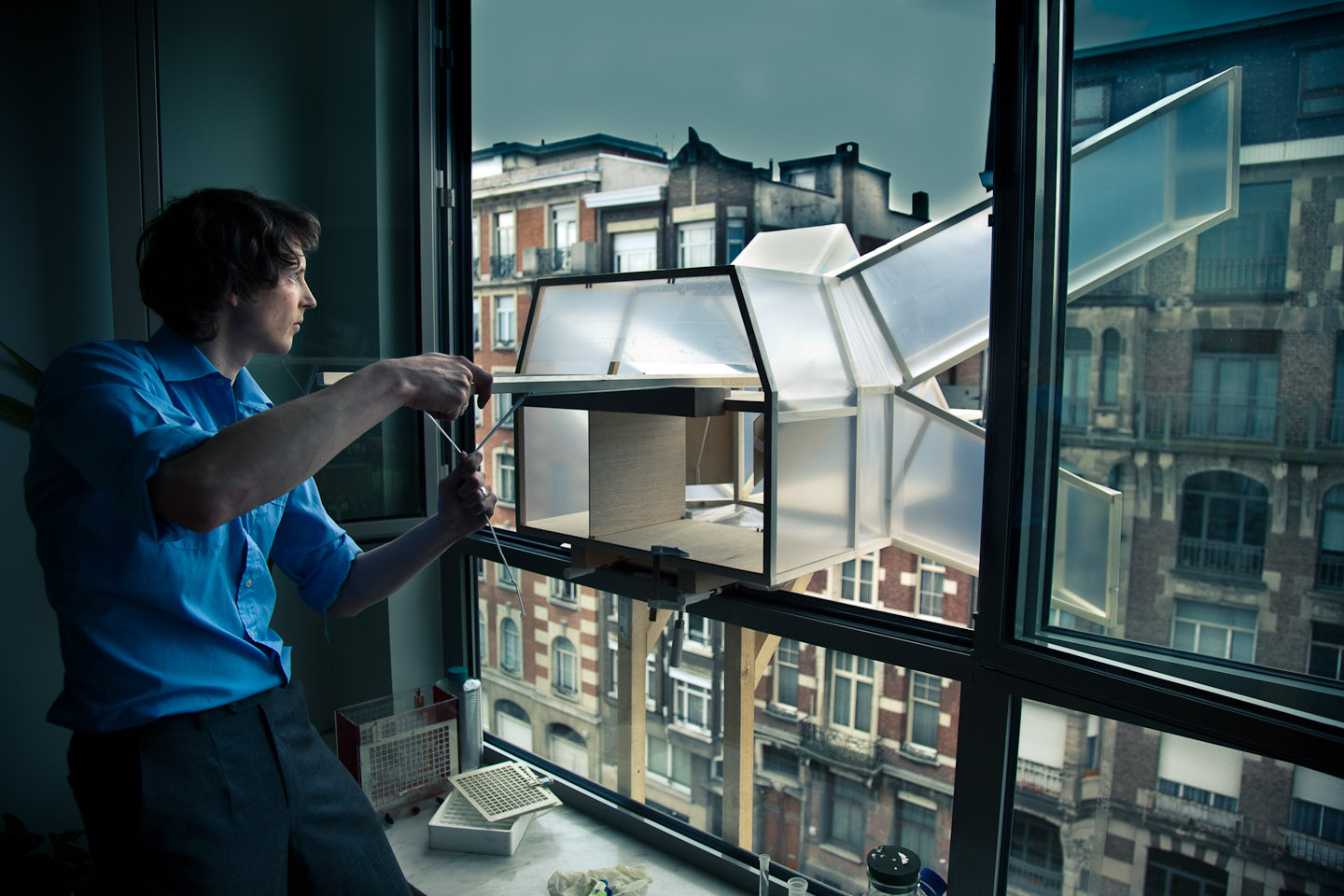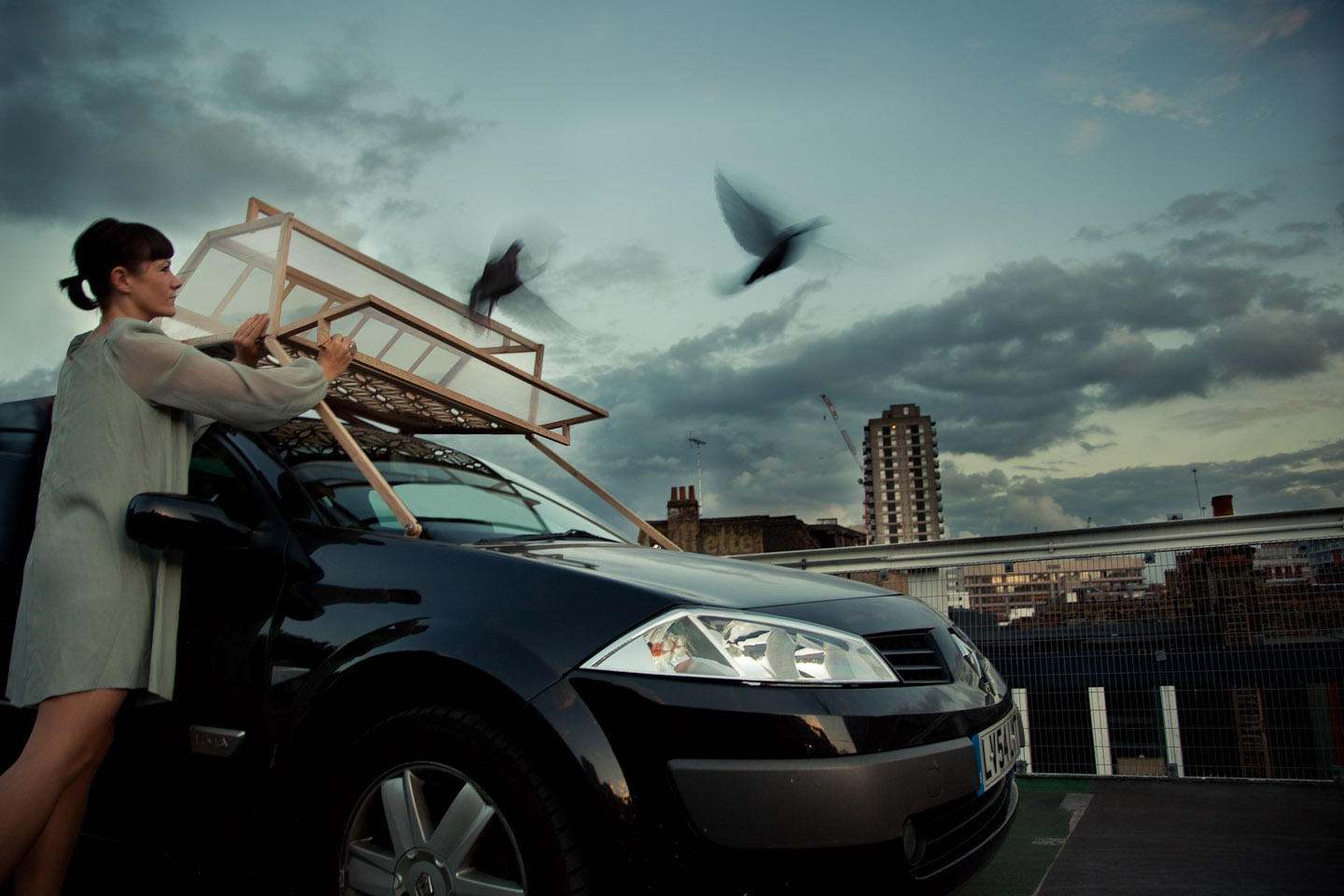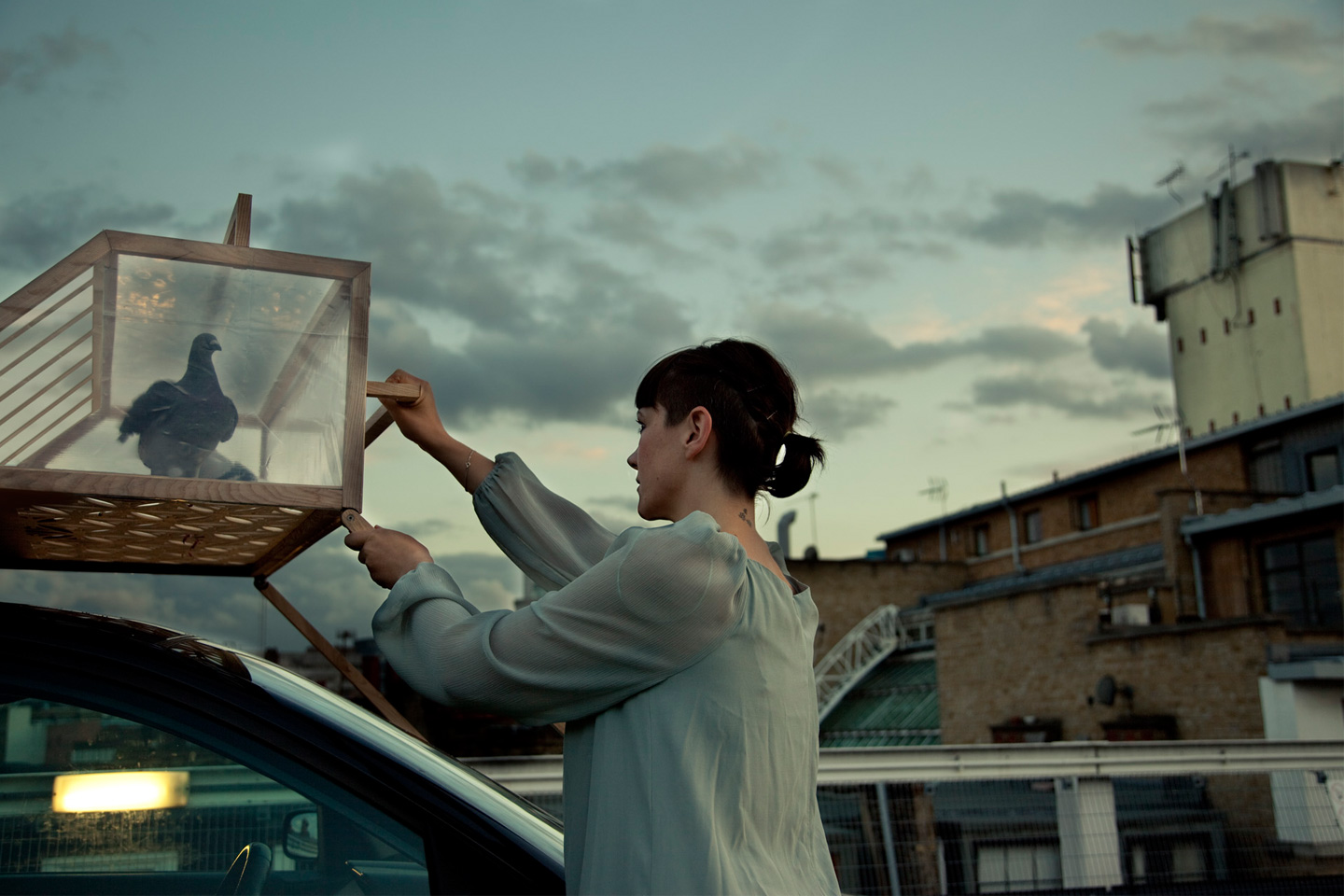This work consists of a series of interventions on different scales, in pursuit of making a pigeon defecate soap.
The first intervention is on the micro-scale. With the help of biochemist James Chappell, we have used synthetic biology to design and create a bacteria that can modify the metabolism of pigeons. To achieve this, we have created a new biobrick, or standard biological part, that when added to the genetic information of the bacteria, creates lipase. We have also used a biobrick that lowers the ph. The result is a biological device that produces a kind of window-soap. We have built this device in the bacteria Lactobacillus, which is a bacteria that naturally occurs in the digestive tract. So when feeding this bacteria to a pigeon, it should produce and defecate biological soap. The biobrick we have created is freely accessible from the standard registry of biological parts.
See the biobrick created for this project in the Registry of Standard Biological Parts.
One can however never consider the bacteria in itself. Like the Lactobacillus bacteria is the chassis for the synthetic genetic information, so is the pigeon the carrier of the synthetic bacteria. And beyond the bacteria in the pigeon, we should consider the pigeon in the city. We should consider the city as a vast and incredibly complex metabolism in which we, the human species, are but the tiniest of fractions; tiny and yet intrinsically linked into an organic embroidery beyond our understanding. It is within this complex fabric that (future) biotechnologies will end up.
Therefore, these microscopic interventions are interwoven with interventions on the macro-scale, as documented in the film. Pigeon fanciers are a dying breed of mostly middle-aged men that keep up to hundreds of pigeons in order to race them. The tacit knowledge and rituals they master might by many not be considered science but does often remind of the DIY aesthetics that new biotechnologies might bring.
The interactions and knowledge transfer both on the microscopic and macroscopic scale, have inspired a series of speculative objects. The first artefact is an interface between pigeons and parked automobile, allowing the produced soap to land on the windscreen.
The second artefact is a contraption that allows these pigeons to become part of your house, part of the architecture. This pigeon house is attached to your windowsill and allows you to feed the pigeons, separate and select them and direct them through different exits. It facilitates bespoke urban disinfection.
Currently, European regulations make it impossible to take our created bacteria out of the lab and test it on pigeons. However by adding the biobrick to the Standard Registry of Biological Parts, anyone can access the design and create the bacteria. In a synthetic biology future, this would be as easy as playing with lego. I like to believe that as such, the organism has somehow been released into the world. More importantly, I like to believe that the work adds a much needed aesthetic and conceptual diversity to the toolbox that will soon be used to build artificial life.
Beyond these legal restrictions, political, ethical and ideological considerations are in play too. It is the work’s aim to approach this grey zone. And in that sense too, the pigeon proves a powerful messenger.
Indeed, feral pigeons present themselves as the ideal platform and interface for urban biotechnologies. On the one hand, they are by many seen as venom or flying rats. On the other hand, one could argue they are actually already a product of biotechnology: Over generations, they have been designed and bread to come quicker, to look pretty, to deliver post, to spy, tumble or race.
Perhaps pigeons as we know them, have always been an artificial life-form?
Scientific collaboration – James Chappell. Photographs by Tuur Van Balen and Pieter Baert.
Supported by the Flemish Authorities
Thanks to Jan Boelen, Cate Edgar, Keith Plastow, Albert Stratton, Kasper Van Rompay & Joep Verburg.








